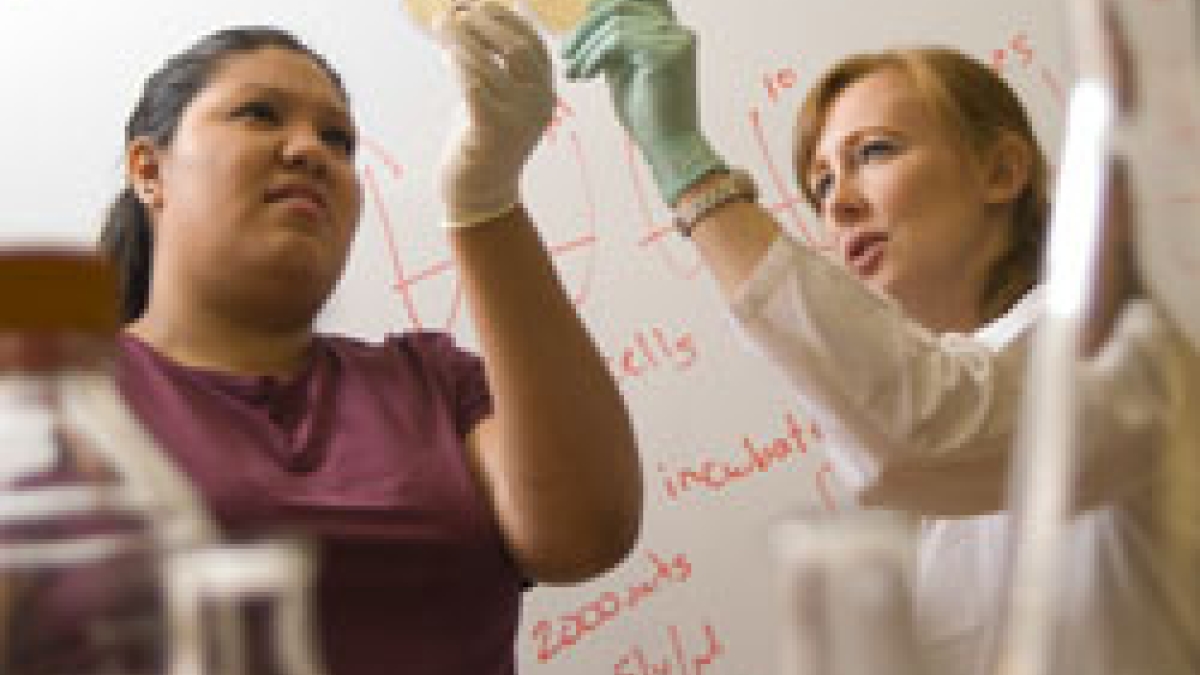Pam Marshall, associate professor of genetics and cell biology, was part of an interdisciplinary team of researchers from Arizona State University and Columbus State University to publish new findings on calcium homeostasis in the April issue of Mathematical Biosciences.
The article, titled "Bifurcations and limit cycles in cytosolic yeast calcium," details the research into this fundamental cellular process in yeast, and the mathematical models used to describe the cellular response observed during the research process.
ASU's New College of Interdisciplinary Arts and Sciences spoke to Marshall for a deeper dive into what the research was and how it'll make an impact moving forward.
Question: What is important about calcium homeostasis? How does it impact our bodies and health?
Answer: Yeast is a well-known microorganism that lives in the immediate human environment, is part of our food preparation, bread and beer, but has also been for long time a model system where fundamental questions of biology can be studied. Yeast colonies are composed by a large number of individual yeast cells and can be naturally found in soil, plants and as animal and human parasites.
These colonies are able to survive and thrive in a wide variety of environments, some of them quite extreme, such as in very salty surroundings. The mechanisms by which these organisms are able to maintain acceptable internal conditions against external changes, homeostasis, is of course of great interest. The complex structure of these mechanisms can be more easily studied in yeast and other simple organisms, but the results are often applicable to human health. The inner workings of cardiac cells have much in common with the ways in which yeast controls its internal environment. We seek a deeper understanding of yeast’s calcium homeostasis as a way to unlock knowledge about our own bodies and as a way to create new industrial processes where yeast and similar organisms play a role.
Q: What were your findings? Why are they important?
A: Our research has as a key goal to understand the dynamic features of calcium homeostasis. After a disturbance in their environment, such as a steep increase in the surrounding calcium concentration, an organism will eventually adapt to it, but the process is not immediate. Furthermore, sometimes the organisms can respond not in a single way and might eventually reach one of many different stable states; that is, their response might exhibit a bifurcation. Under other specific conditions the response might show oscillations, switching back and forth between different conditions and not settling in one of them. To observe and predict the presence of bifurcations and oscillations is always a striking result and an important and direct way to verify our understanding of a system. Knowing when these features appear also opens the possibility of creating control mechanisms: in medical applications we would like to find ways to ensure that we reach a desired final target state.
What this particular work has achieved is the integration of three different methods of research towards the goal of understanding calcium homeostasis.
1. Experimental work where the calcium intake of a group of yeast cells is measured.
2. Mathematical modeling that, using known properties of the yeast predicts the possible presence of bifurcations and oscillations.
3. Physical modeling that bridges the single-cell level predictions of the mathematical models with the averages for whole populations observed in the experiments.
The mathematical model we used does in fact predict the presence of the special features of bifurcations and oscillations in the yeast response. Our physical modeling indicated that the bifurcations would be observable as strong changes in the average response of the yeast against exposures to ever larger calcium concentrations in the environment. Finally, we confirmed that such changes were observed in the actual experiments.
Q: How will your findings impact future research?
A: One of the most important aspects of this work is the avenues it opens for future investigations. We are currently exploring many avenues of research based on these first results. We are exploring new experimental methods that would better reveal the details of the approach to equilibrium. We are looking at refinements of the mathematical models that would better capture the nature of the processes.
Q: Tell us more about the interdisciplinary nature of the research.
A: An exciting aspect of this project was that it required the collaboration of three members of the faculty of School of Mathematical and Natural Sciences. I am a biologist with expertise in yeast who, along with a group of my students carried out the experiments at the core of the project. Haiyan Wang is a mathematician who along with an external collaborator, Guihong Fan, now at Columbus State University in Alabama, carried out the mathematical analysis of the model and established the presence, within the model, of both bifurcations and oscillations. Francisco J. Solis, a physicist, integrated the mathematical and the biological work and analyzed the experimental results in light of the mathematical findings.
More Science and technology

ASU postdoctoral researcher leads initiative to support graduate student mental health
Olivia Davis had firsthand experience with anxiety and OCD before she entered grad school. Then, during the pandemic and as a…

ASU graduate student researching interplay between family dynamics, ADHD
The symptoms of attention deficit hyperactivity disorder (ADHD) — which include daydreaming, making careless mistakes or taking…

Will this antibiotic work? ASU scientists develop rapid bacterial tests
Bacteria multiply at an astonishing rate, sometimes doubling in number in under four minutes. Imagine a doctor faced with a…
